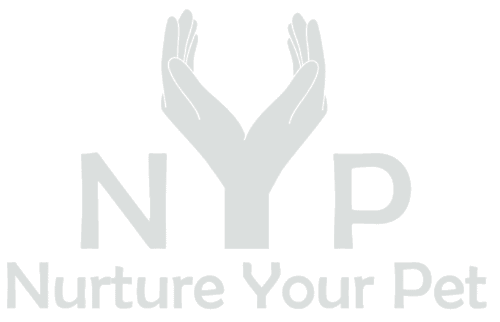When dogs are feeling hot, their paw pads release sweat to help cool them down. However, sweating through their paws alone isn't enough to regulate their body temperature effectively, especially during intense exercise or on hot summer days. Dogs rely on panting as their primary cooling mechanism Panting causes tongue and airway moisture to evaporate as dogs lose heat.
Unlike humans, dogs can stay cool without sweating. Understanding how dogs regulate their body temperature is important for their health, especially in hot weather or while exercise. Provide shade, water, and avoid heavy exercise during strong heat waves to keep our pets cool.
Understanding how dogs regulate body temperature
Dogs regulate body temperature differently than humans. Humans stay cool by sweating, but dogs have evolved additional cooling systems. Understanding how dogs regulate their body temperature is important for their health, especially in hot weather or while exercise.

Do dogs sweat? Exploring the different ways dogs sweat
Dogs have sweat glands but don't sweat through their skin. These sweat glands are on their feet, nose, and ears. Unlike humans, dogs pant to cool off.
Sweat glands in dogs: A closer look at their anatomy
Dogs have two types of sweat glands: eccrine and apocrine glands. Eccrine glands are responsible for producing watery sweat, while apocrine glands produce a thicker, oilier secretion. Eccrine glands in dog paw pads help them cool off. When hot, paw sweat evaporates and helps cool the dog.
Panting: The primary cooling mechanism for dogs
Panting is the primary way dogs cool themselves down. When a dog pants, moisture in their breath evaporates from their tongue and airways, which helps to dissipate heat. Panting increases the airflow across the moist surfaces of the mouth, throat, and lungs, allowing the dog's body to release heat more efficiently.
Panting also helps dogs regulate their body temperature when stressed or active. It helps them cool quickly and avoid overheating. In extreme heat or exercise, panting may not be enough.
Other ways dogs cool down: Paw pads, nose, and ears
In addition to panting, dogs have other ways to cool down also. As mentioned earlier, dogs sweat through their paw pads. When dogs are feeling hot, their sweat glands in the paw pads release sweat, which evaporates and helps to regulate their body temperature.
Dogs also use their nose and ears as cooling mechanisms. The blood vessels in a dog's nose and ears are located close to the skin's surface, making them ideal for dissipating heat. Dogs will often seek out cool surfaces to lie on or rest their heads against to help cool down these areas.
Signs of overheating in dogs and how to prevent it
Dogs can overheat, especially in hot weather or after hard exercise, despite their strong cooling mechanisms. Dog owners must detect hyperthermia symptoms and take precautions. Overheated dogs may drool, breathe quickly, have bright red tongues or gums, be weak, vomit, and collapse. If you notice any of these symptoms, calm your dog immediately and seek veterinary attention.
To prevent overheating, especially in hot weather, give your dog fresh water and shade. Instead of exercising your dog during the hottest hours, walk them early morning or late evening. Consider your dog's breed and heat tolerance because some breeds overheat more easily.
Common myths about dogs and sweating debunked
There are several myths surrounding dogs and sweating that need to be debunked. The belief that dogs don't sweat is common. As mentioned, dogs have sweat glands, but not like us. Dogs sweat most on their paw pads, but their noses and ears have glands too.
Another myth is that shearing a dog's fur cools them. Trimming a dog's fur may seem sensible, but it might really harm it. A dog's coat insulates them from the elements. Shaving a dog's fur can disrupt their cooling mechanisms, expose their skin to the sun, and increase their risk of sunburn.

Tips for keeping your dog cool in hot weather
Keep your dog cool in hot temperatures for their wellbeing. The following tips can keep your pet comfortable during summer:
- Give your dog ample of shade on walks and in your yard. Avoiding the sun's direct heat will help them stay cool.
- Always give your dog clean, cool water. Carry a water bottle and bowl when traveling. Consider placing multiple water basins throughout your home.
- Avoid walking your dog during the hottest hours of the day. Instead, stroll in the morning or evening when it's cooler.
- Cool your dog using mats, jackets, or bandanas. These gadgets use advanced cooling technology to regulate your dog's body temperature.
- Keep your dog off hot asphalt or concrete surfaces, as these can quickly heat up and burn their paw pads. Stick to grassy areas or consider using booties to protect their
- Treat your dog to frozen treats like ice cubes or frozen dog-friendly snacks. These can provide a refreshing and cooling reward during hot
Conclusion:
Although dogs sweat less than humans, they have effective cooling systems to regulate their body temperature. Knowing how dogs cool down is vital for their health, especially in hot weather or while exercise. We can keep our pets cool by providing shade, fresh water, and counsel against hard exercise in extreme heat. Remember to watch for overheating symptoms and cool your dog fast. With proper care, we can keep our pets happy and healthy even on hot days.
Explore our blog for essential pet health articles covering preventive care, common health issues, nutrition, and overall well-being. Stay informed and empowered to make the best decisions for your pet's health.








